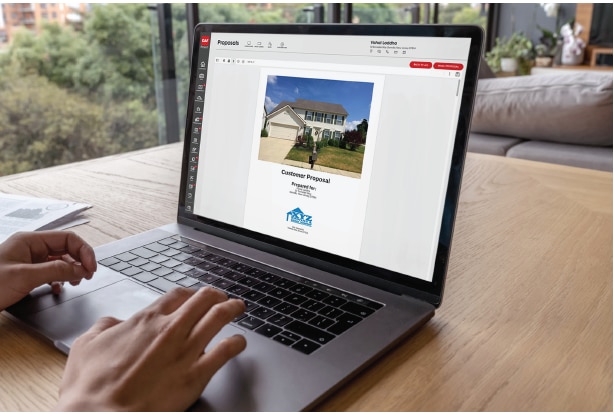The use of technology has shifted customer needs, and continues to impact the companies they do business with. Thanks to the proliferation of the internet and social media, customers are online — and they expect you to meet them there.
With the roofing industry anticipated to grow over the next few years, now is the time to ensure that your business is equipped to meet customers where they are.
Meet Customers Online
The internet is where your customers begin their journey when looking for roofing services and roofing contractors. Your website needs to be informative and clearly state how to contact you. Most importantly, prioritize being mobile responsive—the sizing and navigational tools should automatically adjust to fit whatever device a customer uses. With more than half of website visits happening on a mobile device, this can be a key factor in delivering a positive impression and a good overall experience for your customer.
If you have yet to establish social media accounts for your roofing business, start by building an online presence. Most customers are already on social media—checking your business out, reading reviews, and looking through photos of your work before you even know they are on the hunt for a roofing contractor.
Deliver What Customers Want
Just as you invest in tools and technology to help you work more efficiently, it's also important that you invest in solutions that help you keep up with what your customers want.
One of the easiest ways to get started is to look at the resources your manufacturer provides to help you sell their products. For instance, GAF offers contractors a technology platform to streamline the sales process and help companies meet customers' expectations at the same time. GAF Project is an all-in-one solution that works with you from the time the lead comes in through estimating the job, delivering a professional sales presentation, and closing the sale with digital contract signing. It integrates into many of the software platforms that you may already use and offers convenient customer-facing tools, such as the ability for homeowners to visualize their new roof.
Listen to What Other Contractors Are Saying
Michael Manick of MGS Construction in Salem, New Hampshire, describes GAF Project as one of the best things to happen to the company. "Everything is in one place, and it centralizes our information. It's a very helpful, useful tool for us," he says.
He also appreciates the flexibility to meet with customers either in person or virtually. "If there's a job two hours away, I can offer the customer the option to do the virtual estimate with them. It's a time-saver on a lot of fronts."
Project Manager Cherokee Page-Rose from RVA Exteriors in Richmond, Virginia, says GAF Project is straightforward and easy to use. "I like that you can upload documents to send with the proposal so, rather than going through email and having the customer try to keep track of it all, they have it all in one place."
Consider a Hybrid Approach for the Future
Your business needs to be able to offer customers the experience they expect — a hybrid approach of human interaction combined with digital experiences. Customers want to interact digitally on their own schedule, but they may also want to reach out to a human or arrange an in-person visit before buying.
Contractors should anticipate fulfilling both of these needs. One way to do that is to implement tools that help you meet customer needs, both digitally and in person. For additional tools and business building support, visit gaf.com/getthere.

